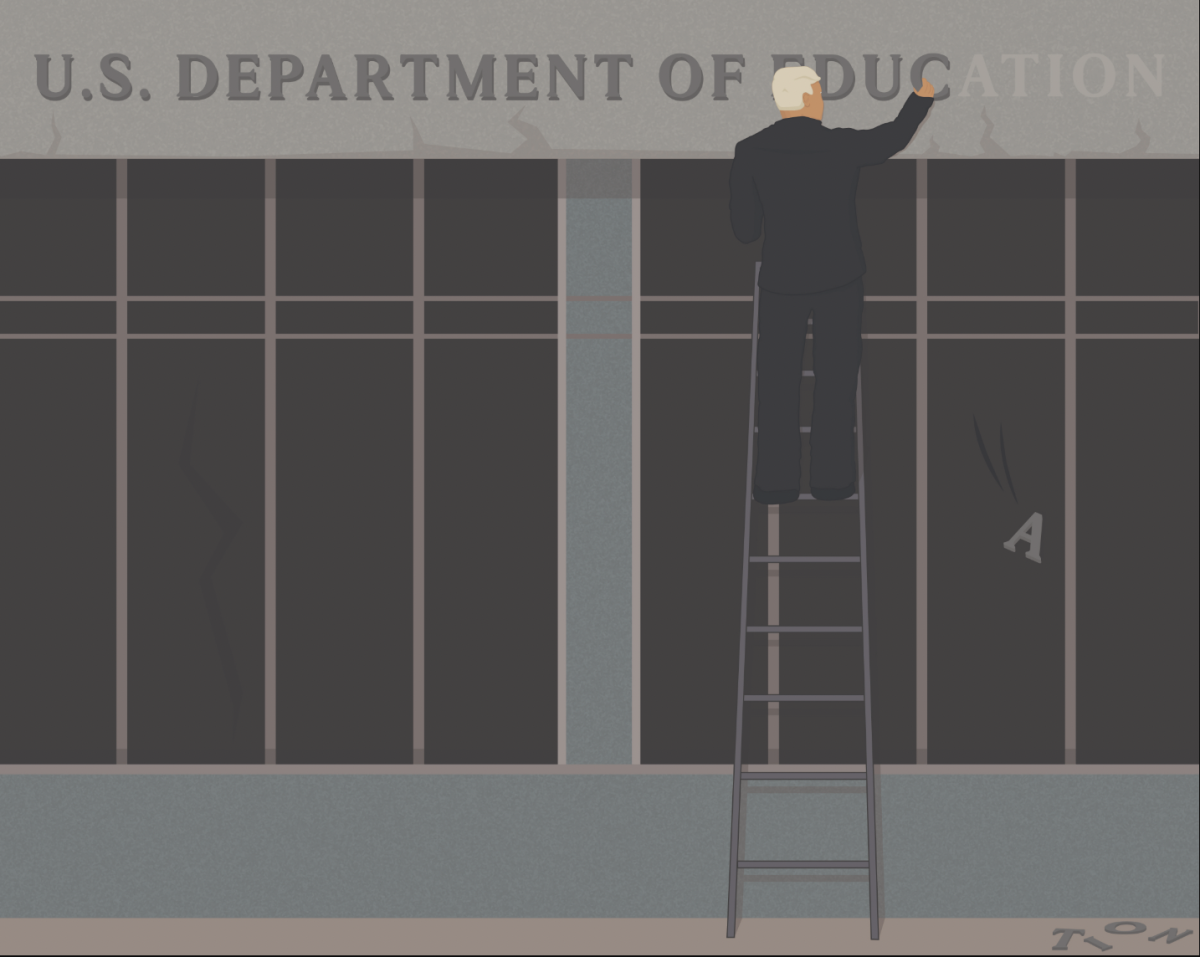Opinion: Students taking online courses should not have to pay useless fees
Since the COVID-19 pandemic first started last March, thousands of students have transitioned to taking remote courses. This means that all the on-campus resources students are paying for are going unused by the students.
Students enrolled in just online or remote courses are waived from Texas State’s Bus, Medical Services, Rec Sports, and Student Center fees. But, along with the designated tuition of $3,700, students must also pay extra mandatory fees — hundreds of dollars going toward services that do not always benefit them directly.
Online students are still required to pay $300 in athletics fees and $240 in computer service fees among others — both extra costs those students never use because they do not come to campus.
Online students still pay near $1,000 for additional fees and resources they rarely use. $1,000 is a lot for a student who is struggling to pay bills and rent during a pandemic that has left many people unemployed.
Daniela Rodriquez, a political science sophomore, says paying for these extra fees seems like a complete waste of money. Online students could use that money elsewhere.
“Why should I pay for resources that I’m not using? That money I pay for fees could be used to pay for rent or my school supplies,” Rodriguez says.
Sandra Rico, a fashion merchandising junior, says online students should have the option to only pay for resources they are utilizing.
“I don’t see the athletic fee as something I should be paying for. If I were to be given options on our fees, I would pay the library one since that is a helpful resource to me,” Rico says. “However, I would not pay the athletic fee since that is not something I use.”
On top of $1,000, students taking all remote courses are also required to pay an additional $50 Electronic Course Fee.
An additional $50 fee is required per every semester credit hour that a student is enrolled in. This means a full-time, completely remote student will pay anywhere from $600-$900 extra just to simply take online courses. A student who takes a three-hour credit online course pays $150 extra due to this fee.
Students did not foresee having to shift to an entirely remote format of learning. However, because of the circumstances regarding COVID-19, students are forced to settle with the watered-down versions of their courses.
The circumstances that require online courses are completely out of the student’s control. Even with instructors trying their best to deliver online education to students, students are ultimately not getting what they paid for.
There is no reason for a student to pay extra for a class when the value of the class is significantly lower compared to a class in person. Though online classes offer more flexibility and freedom to students, students receive more enrichment from in-person courses.
In an in-person course, students have the opportunity to get hands-on experience and immediate feedback from their instructors.
Understandably, universities are able to run and function because of the extra fees their students pay. However, it should not have to be this way.
Universities should accommodate their online students when it comes to paying fees. Online students should only pay for what they are using and directly benefiting from.
This school year, remote students are getting the shorter end of the stick when it comes to courses. Many students are struggling financially, and it is important the university understands that and is accommodating.
Online students should not be required to pay additional fees, especially when they are not getting the same quality of learning as their in-person peers.
– Nadia Gonzales is a public relations junior
Opinion: Fees are necessary for university operations, student well-being
Since the beginning of the COVID-19 pandemic, students have demanded cuts in university tuition and fees to reflect the quality of online education and to diminish the burden placed on students in a financial crisis.
While universities owe it to their students to help keep them enrolled, they must also cover the costs of valuable student resources to ensure their students still have the tools needed to succeed. Instead of cutting fees altogether, Texas State must find other ways to help students afford to stay in school.
The long list of fees, and the large numbers to which they add up, often vex students when their payments are due. Some question the need to pay for athletics fees and the vague concept of ‘student success.’ However, all students benefit directly from these fees in some way. Athletics fees help pay for athletes’ scholarships, the Student Service fee provides high-profile guest speakers and our own University Star and the bus fee allows students across San Marcos to get to class safely.
Relevant fees — including the Bus fee, Student Center fee and Medical Services fee — are already waived for students who take online-only courses and thus cannot use these resources. They still pay fees to support the Alkek Library, which hosts research databases that help students complete assignments no matter where they are. They also pay fees toward supporting their fellow students in work-study programs that help them pay for their classes.
For the past year, Texas State students have not been the only ones losing money and opportunities due to the economic issues exacerbated by the pandemic. The university itself has lost millions, and funding for public universities across the nation continues to look bleak. From 2020 to 2021, Texas State’s total estimated income from all sources decreased by approximately 5%, following a period of consistent growth.
In order for Texas State to do what students ask of it, it needs to collect tuition and fees to supplement the state and federal funds it receives. Students simply should not ask the university to do without these funds and expect a satisfactory response. What Texas State could do, however, is charge these fees compassionately, giving further assistance and waivers to students who simply cannot afford to pay them.
Many state universities, including Georgia State University, offer retention grants to students who find themselves in difficult financial positions, as many do now. While Texas State has implemented something similar in the form of Bobcat Cares grants, many students do not receive these grants until after their tuition payments, and more feel frustrated with rejections, especially when Texas State follows that rejection with an unexpected grant payment anyway.
Maintaining programs like Bobcat Cares grants — half of which was funded by the federal government through the CARES Act, at no cost to the university — helps students stay enrolled when they may not otherwise be able to. Texas State noticed about a 9% difference in retention in students who received financial assistance from the university over students who did not.
It is imperative the students and families who can afford to pay tuition and fees continue to do so, in full, so that the students and families who are experiencing less fortunate circumstances can receive assistance from the university. Furthermore, students must fight the state legislature, which threatens to retain cuts to higher education funding, to ensure Texas State can afford to offer assistance to those who need it most.
– Toni Mac Crossan is a biology graduate student














